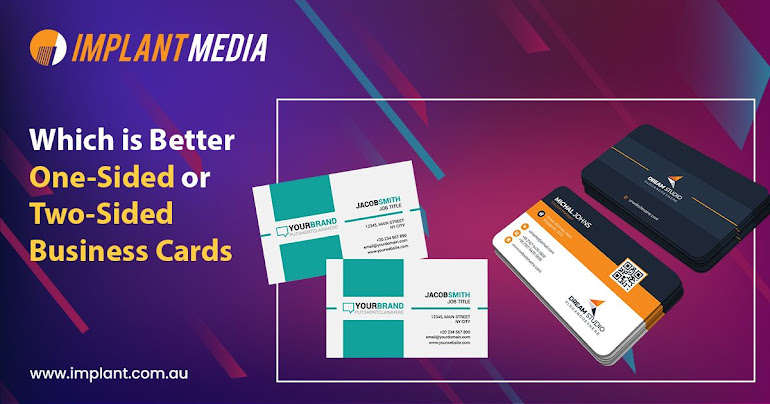One-Sided vs. Two-Sided Business Cards: Which is the Best Choice?
When it comes to business cards, choosing between a one-sided and a two-sided design can significantly impact how your card is received. Both styles have their own set of advantages and can serve different purposes based on your business needs and personal preferences. Let’s explore the benefits of each to help you decide which is the best choice for your business cards.
One-Sided Business Cards
Simplicity and Clarity One-sided business cards are straightforward and easy to read. With all the information on one side, recipients can quickly find your contact details without having to flip the card. This simplicity is often appreciated in fast-paced networking environments where quick exchanges are common.
Cost-Effective Printing on one side of the card is generally less expensive than printing on both sides. If you are on a tight budget, opting for one-sided cards can be a cost-effective solution without sacrificing quality. This option allows you to allocate more of your budget towards higher quality materials or special finishes like embossing or foil stamping.
Traditional Appeal One-sided cards have a classic and traditional look. They are often preferred by businesses that want to maintain a conservative and professional image. This can be particularly beneficial in industries like law, finance, and consulting.
Two-Sided Business Cards
More Space for Information Two-sided business cards provide additional space, allowing you to include more information without overcrowding the design. You can use the front side for essential contact details and the back side for additional information such as your company’s tagline, logo, social media handles, or a brief description of your services.
Enhanced Design Opportunities With more space to work with, two-sided cards offer greater flexibility for creative designs. You can create a visually appealing layout that makes your card stand out. This can be especially advantageous for businesses in creative industries like design, photography, and marketing.
Double the Impact A well-designed two-sided card can make a stronger impression. You can use the back side for a call to action, a special offer, or a memorable quote that reinforces your brand message. This extra touch can help your card leave a lasting impact on recipients.
Making the Decision
Consider Your Brand Image Think about the message you want to convey with your business card. If your brand is modern and creative, a two-sided card with an eye-catching design might be the best choice. On the other hand, if you prefer a more traditional and professional look, a one-sided card may be more suitable.
Assess Your Content Needs Evaluate the amount of information you need to include on your business card. If you have multiple contact details, social media links, and additional information, a two-sided card can accommodate all these elements without making the design look cluttered.
Budget Constraints Consider your budget when making a decision. If you need to keep costs down, a one-sided card is a more economical option. However, if you have the budget to invest in a two-sided card, the additional benefits in terms of design and information can be worth the extra expense.
Target Audience Think about the preferences of your target audience. In some industries, minimalistic one-sided cards might be more appreciated, while in others, a detailed two-sided card could be more effective.
Conclusion
Both one-sided and two-sided business cards have their own advantages, and the best choice depends on your specific needs and goals. One-sided cards are perfect for simplicity and cost-effectiveness, while two-sided cards offer more space for information and creative design opportunities. By considering your brand image, content needs, budget, and target audience, you can make an informed decision that best suits your business.
Whether you choose a one-sided or a two-sided business card, the most important factor is to ensure that the design is professional, the information is clear, and the card accurately represents your brand. With these considerations in mind, you’ll be well on your way to creating an effective business card that makes a great impression.


Comments
Post a Comment